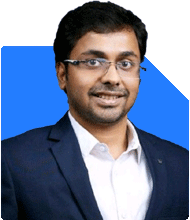Mihir Tanna |1054 Answers |Ask -Follow
Tax Expert - Answered on Nov 17, 2022
He handles various kinds of matters related to direct tax such as PAN/ TAN application; compliance including ITR, TDS return filing; issuance/ filing of statutory forms like Form 15CB, Form 61A, etc; application u/s 10(46); application for condonation of delay; application for lower/ nil TDS certificate; transfer pricing and study report; advisory/ opinion on direct tax matters; handling various income-tax notices; compounding application on show cause for TDS default; verification of books for TDS/ TCS/ equalisation levy compliance; application for pending income-tax demand and refund; charitable trust taxation and compliance; income-tax scrutiny and CIT(A) for all types of taxpayers including individuals, firms, LLPs, corporates, trusts, non-resident individuals and companies.
He regularly represents clients before the income tax authorities including the commissioner of income tax (appeal).... more

I am a senior citizen retired pensioner.
I had intention to sell my both properties located in one town and to invest in one property in another town where I wanted to settle in my retired life. I wanted that the sale proceeds of my two properties should be almost same as the purchase value of a single property in another town to settle there.
I had bought a property in 2015 at Rs 40 lakh in my single name and sold in Feb 2022 at Rs 52 lakh. The buyer deducted 1% TDS and filled in form 26QB and I got form 16(B) from buyer and details of TDS are seen reflected in my Form-26AS.
Thereafter, my 2nd property that I had bought @Rs 7.3 lakh 20 years back, was attempted to dispose, but did not materialise till now.
Anyway, I bought a 5-yr-old jointly owned property from a couple at Rs 80 lakh in June 2022 and deducted 1% TDS (@0.5% from each owner), filled in Form 26QB and provided form 16(B) to the sellers.
So, I invested the sale proceeds of my 1st house 'within a year' of its disposal, in buying a house from Long Term Capital Gain point of view.
My IT Return for AY 2022-23 was filed in July 2022 and it got approved. The 1% TDS deducted by buyer on my 1st property sale got refunded/ adjusted.
I am still trying to sell my 2nd property 'within one year' of buying the June, 2022 property. I want to do this to take benefit of Long Term Capital Gain Tax.
I want to know whether I am going to get the IT benefit by selling my 2nd property 'within one year' of purchase of my June 2022 property ?
I am more eager to know how sale of 1st property in financial year 2021-22 (Feb.'22), purchase of a property in FY 2022-23 (June'22) and again sale (proposed) of 2nd property, (all within 2 years from LTCG point of view) are shown in my next IT Return (AY2023-24).
I am eager to hear from you, Sir!
With effect from Assessment Year 2021-22, the benefit in respect of investment made in two residential house properties is available. The exemption for investment made, by way of purchase or construction, in two residential house properties shall be available if the amount of long-term capital gains does not exceed Rs 2 crore.
If assessee exercisesoption, he shall not be entitled to exercise this option again for the same or any other assessment year.
Benefit will be lower of following:
- Amount of capital gains arising on transfer of residential house; or
- Amount invested in purchase/construction of new residential house property
If till the date of filing the return of income, the capital gain arising on transfer of the house is not utilised (in whole or in part) to purchase or construct another house, then the benefit of exemption can be availed by depositing the unutilised amount in Capital Gains Deposit Account Scheme in any branch of public sector bank, in accordance with Capital Gains Deposit Accounts Scheme, 1988.
So in your case, if you satisfy all the prescribed conditions (including acquiring new property within 3 years, depositing unutilised amount in capital gain deposit account and disclosure is made regarding same in ITR of AY 2022-23 & AY 2023-24); you will get IT benefit.
You may like to see similar questions and answers below
Mihir Tanna |1054 Answers |Ask -Follow
Tax Expert - Answered on Mar 15, 2023
Milind Vadjikar |1238 Answers |Ask -Follow
Insurance, Stocks, MF, PF Expert - Answered on Sep 07, 2024
Mihir Tanna |1054 Answers |Ask -Follow
Tax Expert - Answered on Jul 16, 2024
Samkit Maniar |180 Answers |Ask -Follow
Tax Expert - Answered on Jul 25, 2024
Ramalingam Kalirajan |8615 Answers |Ask -Follow
Mutual Funds, Financial Planning Expert - Answered on Jul 18, 2024
Nayagam P P |5560 Answers |Ask -Follow
Career Counsellor - Answered on May 31, 2025
Radheshyam Zanwar |2580 Answers |Ask -Follow
MHT-CET, IIT-JEE, NEET-UG Expert - Answered on May 31, 2025
Radheshyam Zanwar |2580 Answers |Ask -Follow
MHT-CET, IIT-JEE, NEET-UG Expert - Answered on May 31, 2025
Radheshyam Zanwar |2580 Answers |Ask -Follow
MHT-CET, IIT-JEE, NEET-UG Expert - Answered on May 31, 2025

With a 450 score, chances are very slim to get an MBBS seat in GMC. Choosing between the two, if possible, prefer BHMS
Best of luck to you.
Follow me if you like the reply. Thanks
Radheshyam
With 450, you can keep hopes alive. Best of luck
Radheshyam Zanwar |2580 Answers |Ask -Follow
MHT-CET, IIT-JEE, NEET-UG Expert - Answered on May 31, 2025
Radheshyam Zanwar |2580 Answers |Ask -Follow
MHT-CET, IIT-JEE, NEET-UG Expert - Answered on May 31, 2025
Radheshyam Zanwar |2580 Answers |Ask -Follow
MHT-CET, IIT-JEE, NEET-UG Expert - Answered on May 31, 2025
Radheshyam Zanwar |2580 Answers |Ask -Follow
MHT-CET, IIT-JEE, NEET-UG Expert - Answered on May 31, 2025
Radheshyam Zanwar |2580 Answers |Ask -Follow
MHT-CET, IIT-JEE, NEET-UG Expert - Answered on May 31, 2025
Radheshyam Zanwar |2580 Answers |Ask -Follow
MHT-CET, IIT-JEE, NEET-UG Expert - Answered on May 31, 2025




















